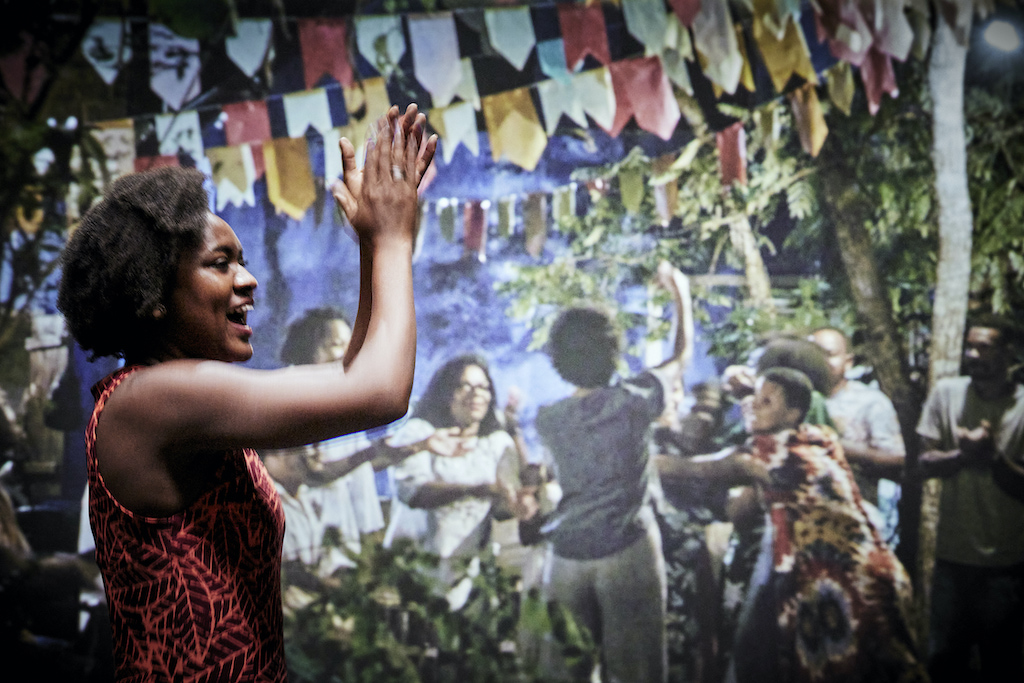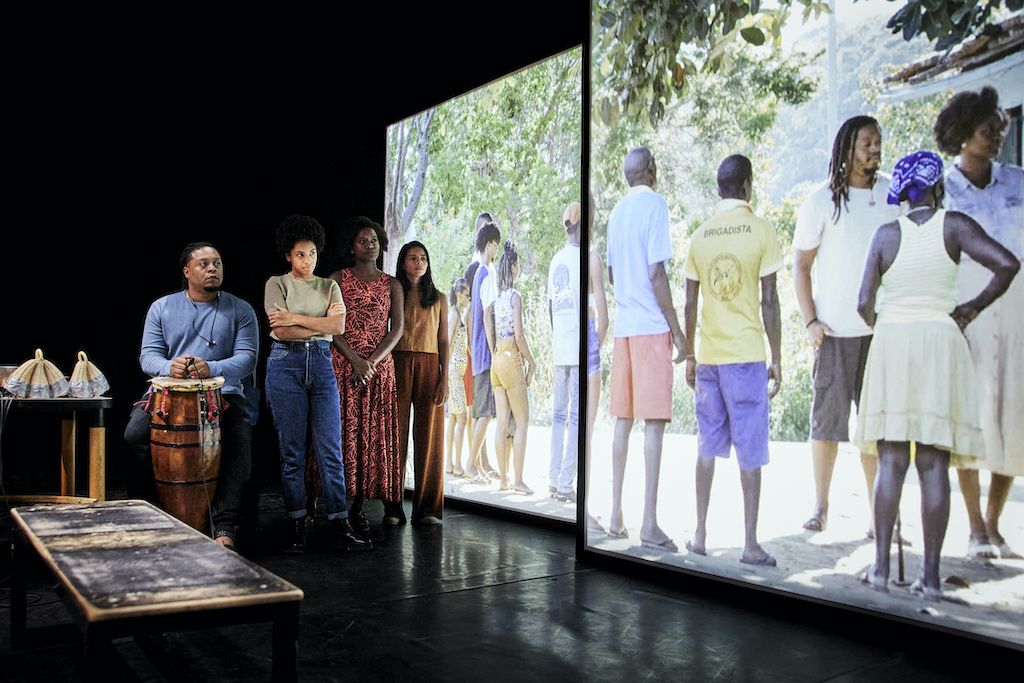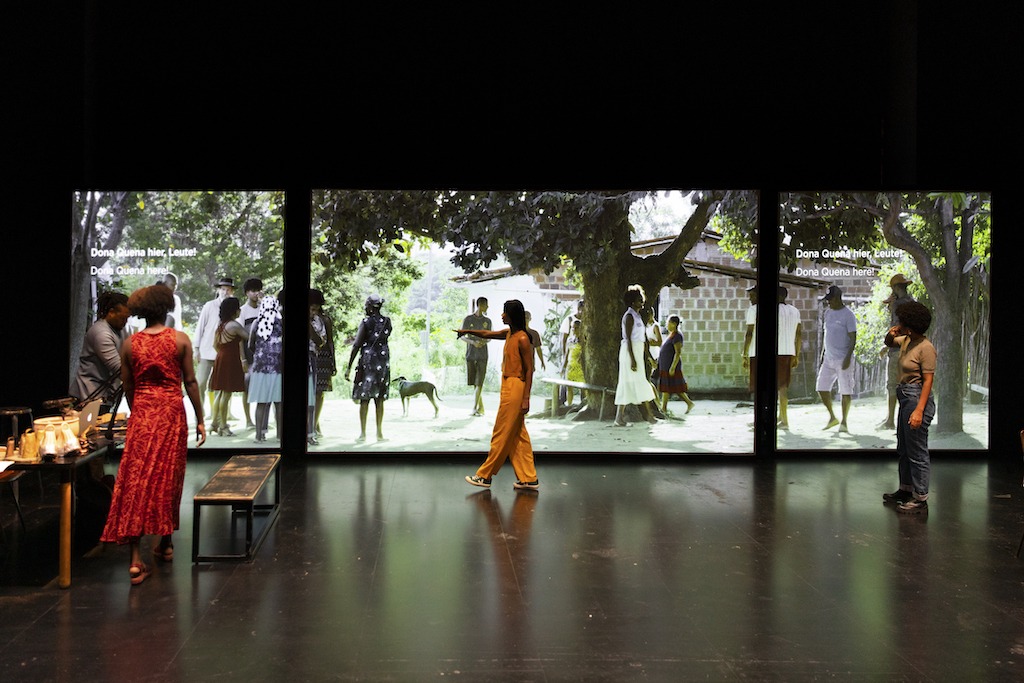The Brazilian artist Christiane Jatahy returns to Paris to present her latest creation co-produced by the CENQUATRE and the Odéon, to evoke slavery and the exploitation of the land in Brazil, a matrix memory of a country disfigured by trauma . More than ever, theatre, cinema, music and songs are summoned to the stage of a geographical and historical journey traversed by shamanic trance spirits.
Between reality and fiction
©nurith_wagner-strauss
On stage, around a table and in front of a screen, are seated two actresses, Juliana França, who is part of an activist theatrical collective in the suburbs of Rio de Janeiro, and Lian Gaia, a descendant of the family of peasant leader João Pedro Texeira, assassinated in 1962 for his positions in favor of a fair distribution of land use rights in the Chapada Diamantina region. They are beautiful, vibrant and fiery young, and they embody two sisters, Bibiana and Belonísia, the two heroines of Itamar Vieira Junior’s novel Torto Arado (The Twisted Plow), a bestseller published in 2019 which also recounts the murder of Seveso, a leader who defended the rights of exploited peasants in this same region. Also present on the set are Gal Pereira, who embodies the magical spirit of reappearing ghosts, and Aduni Guedes, musician ogun specializing in Afro-Brazilian religious festivals which delicately constructs a bewitching sound universe.
Movie theater

©christopheraynauddelage.
To the novel and the story of the two protagonists of the story, is added a third source, the documentary film Cabra Marcado para Morrer by Edouardo Coutinho who recounts the assassination of Texeira, whose family members and relatives of the leader play their own roles. Filming was interrupted by the military dictatorship but twenty years later, the director returned to the characters to confront them with their story. Christiane Jatahy, who excels in filmmaking, adds an extra layer by summoning, in this same region of Chapada Diamantina, in the heart of Brazil, the characters heirs to this same story. The actors on the set therefore find themselves in a new color film, with other inhabitants, and where the lush nature of incredible vistas and waterfalls, nicknamed thegreen islandreveals the hidden side of a dream: exploitations and life tragedies of peasants deprived of their land and mistreated, who sing and dance in the muddy earth to bring back the dead and wandering ghosts.
Stories that intertwine

©christopheraynauddelage.
Words, dances, music, filmed images and spiritual trance thus combine as if to appeal, “After the silence” to all the means of expression that mix reality and fiction inspired by reality. From an informative conference, which reminds us that four million Africans were deported to Brazil for more than 400 years, we move on to the intimate, personal account of each of the protagonists, who navigates between the character of the film, the novel, and his, to express his rage, his anger and his desire to tell. The viewer is therefore caught up in this dizzying maestro, overwhelmed by a flood of information that tells and repeats this story of domination. Technically quite virtuoso, remarkably carried by this quartet of artists on stage, “Depois do silēncio” presents itself above all as a strong emotional experience whose powerful charge cannot leave us unscathed.
Helen Kuttner
“Depois do silêncio”: words, trance and images to tell Brazil – Artistikrezo

